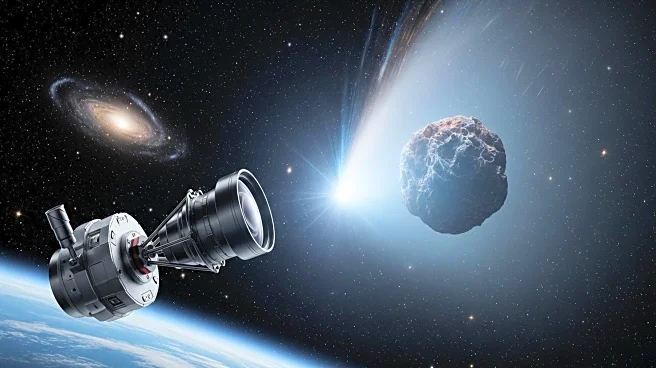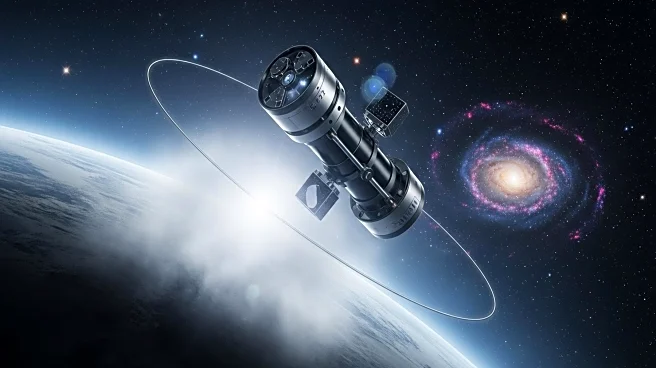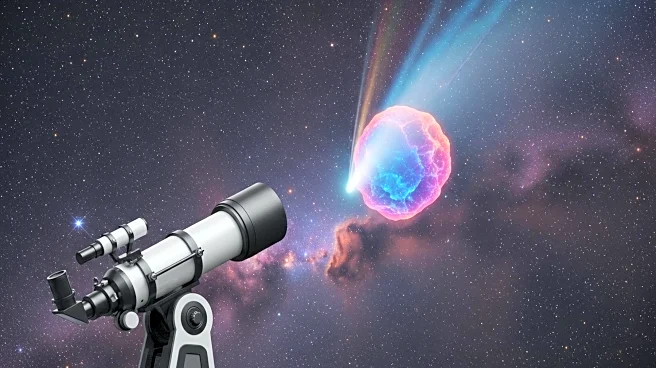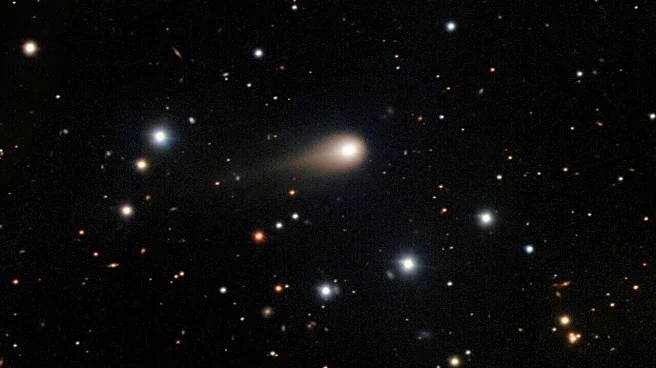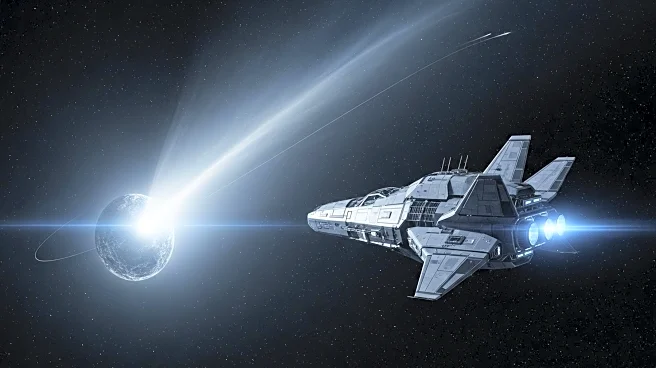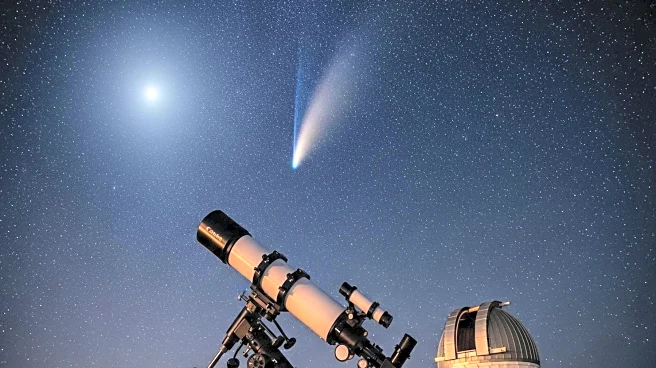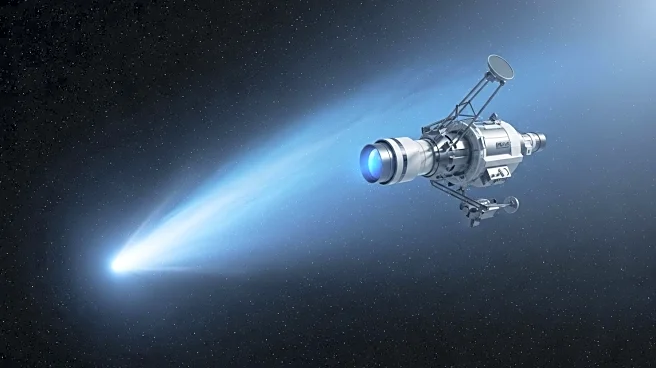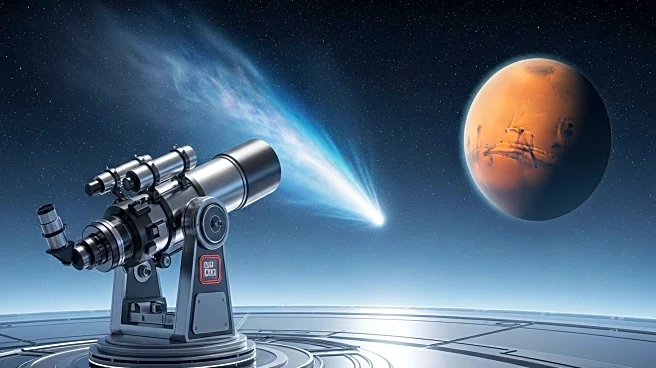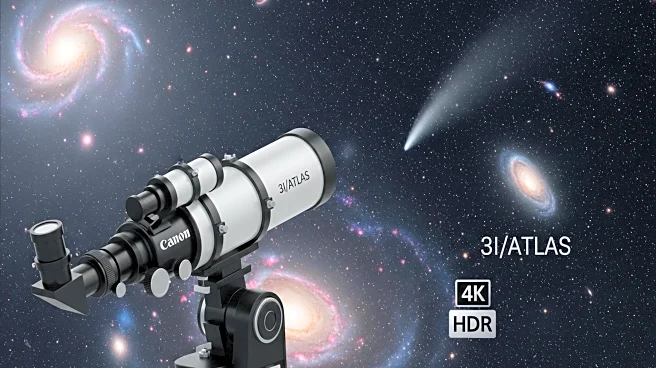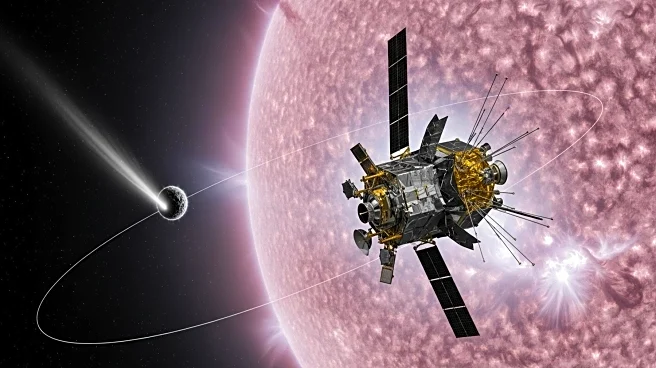What's Happening?
NASA's SPHEREx telescope has detected a significant amount of carbon dioxide gas in the coma of the interstellar comet 3I/ATLAS, along with water ice in its nucleus. This discovery provides insights into the composition of comets from other star systems, suggesting similarities with those formed in our solar system. The comet, discovered on July 1, 2025, is the third known interstellar object to enter our solar system and is being closely studied as it approaches the Sun.
Why It's Important?
The presence of carbon dioxide in the comet's coma challenges existing theories about the formation and evolution of interstellar comets. Understanding the chemical makeup of 3I/ATLAS could offer valuable information about the conditions in other star systems and the processes that lead to comet formation. This research has implications for planetary science and could influence future studies on the origins of comets and the environments in which they form.
What's Next?
As 3I/ATLAS approaches perihelion, scientists expect increased activity, including the sublimation of water ice, which could lead to a more pronounced coma and tail. Observations from Mars orbiters and other spacecraft may provide additional data on the comet's composition and behavior. Researchers are eager to continue studying 3I/ATLAS to gain further insights into interstellar cometary phenomena.
